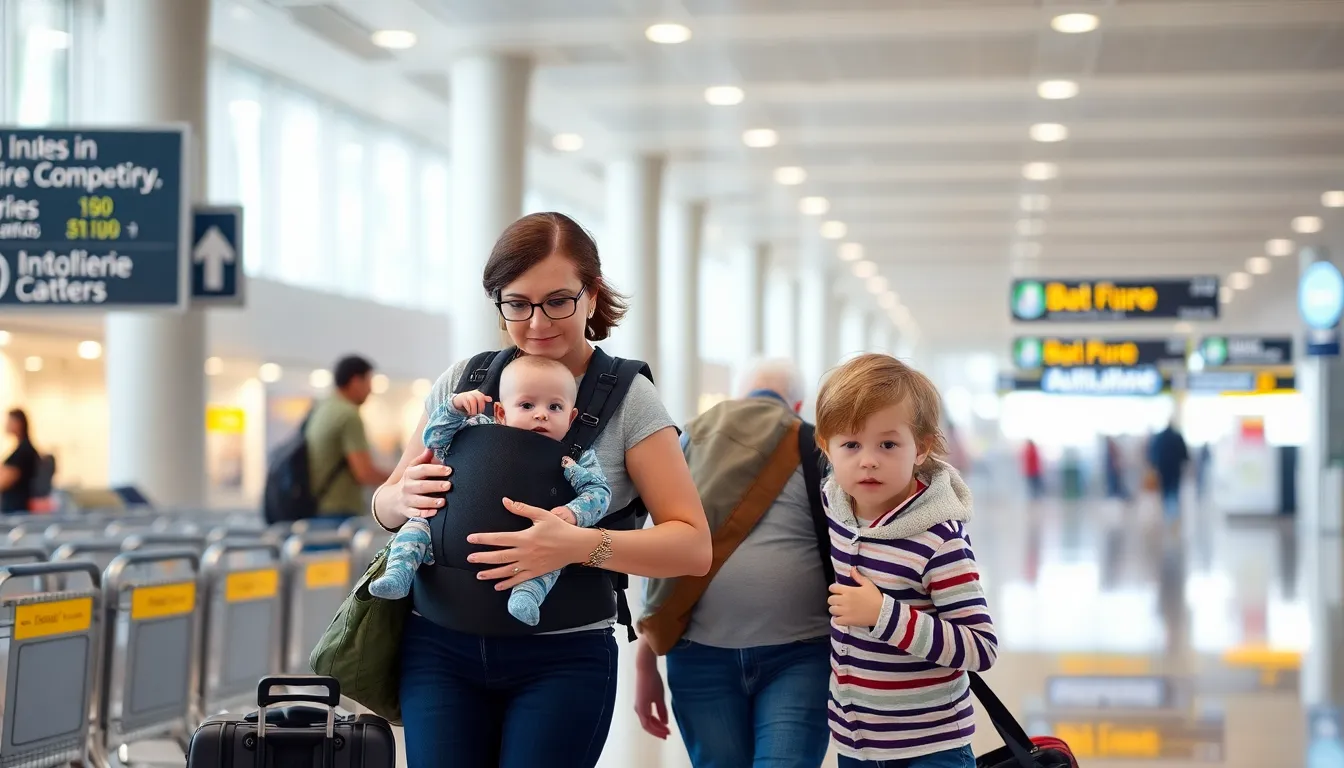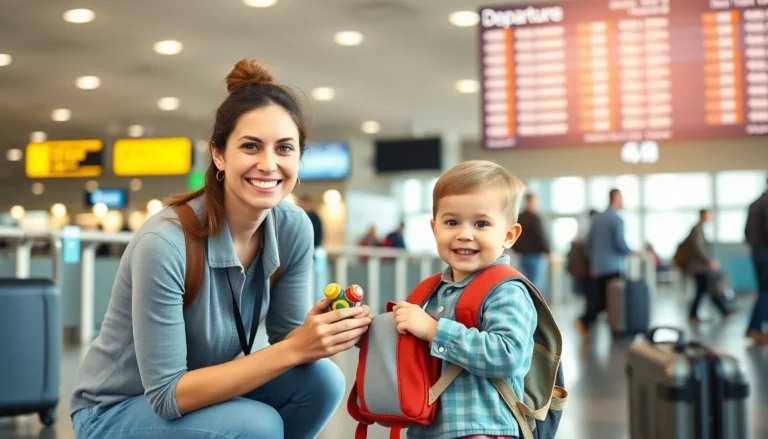Traveling with kids can feel like a game of dodgeball—just when you think you’ve avoided a meltdown, another one comes flying your way. Among the many challenges parents face, figuring out the hardest age to travel with a child is like trying to solve a Rubik’s cube blindfolded. Spoiler alert: it’s not always the age you expect!
From the adventurous toddler who thinks every airport terminal is a playground to the sullen teenager who’d rather be anywhere else, each stage brings its own set of delightful hurdles. So, which age truly takes the cake for being the most challenging? Buckle up as we dive into the whirlwind of family travel and uncover the quirks, laughs, and occasional tears that come with exploring the world alongside little ones.
Table of Contents
ToggleUnderstanding Travel Challenges
Traveling with children presents unique obstacles that vary with age. Parents must navigate different challenges connected to their child’s developmental stage.
Factors That Affect Travel Difficulty
Age plays a central role in travel difficulty. Infants require constant attention, while toddlers may resist sitting still. Preschoolers display curiosity but can quickly tire out. School-aged children engage in activities yet maintain varying patience levels. Teenagers often exhibit indifference, complicating plans and arrangements. Travel duration and destination also impact experiences, with longer trips amplifying stress. Environmental factors like noise levels, climate conditions, and transportation options further increase challenges.
Common Concerns for Parents
Logistics represent a primary concern for parents. Packing necessities often involves more than just clothing; parents also must consider toys, food, and safety items. Safety concerns arise with various environments, from busy airports to unfamiliar locations. Parents frequently worry about children’s health, especially during flu seasons or if traveling abroad. Emotional well-being is critical; children may feel insecure or anxious in new settings, needing reassurance. Each stage evokes distinct worries, from diaper changes to dietary restrictions and sleep routines, shaping the entire travel experience.
The Hardest Age to Travel With Child

Determining the hardest age to travel with a child involves considering various factors. Each developmental stage poses unique challenges.
Infants: The Early Years
Traveling with infants can feel overwhelming. Constant feeding and diaper changing require meticulous planning. Noise sensitivity often complicates flight experiences. Parents frequently face sleep disruptions during travel. Although infants are portable, their needs dictate schedules, making unexpected delays particularly stressful.
Toddlers: The “No” Phase
Toddler travel often encounters resistance. The “no” phase emerges prominently as children assert independence. Restlessness during long waits leads to meltdowns, demanding creative distractions. Engagement through games or snacks becomes crucial during flights and drives. Fear of new experiences might create anxiety for some toddlers. Hence, parents anticipate flexibility in their itineraries to account for unpredictable behavior.
School-Aged Children and Travel
Traveling with school-aged children offers a unique blend of independence and responsibility. This age group typically embraces some autonomy during outings. Parents notice their children begin to engage more with their surroundings, asking questions and expressing preferences. Such enthusiasm contributes positively, but it also introduces varying levels of dependency.
Independence vs. Dependency
Independence flourishes for school-aged children who often desire to make choices. They enjoy selecting activities, restaurants, and even souvenirs. Parents frequently find their enthusiasm for exploration refreshing. Although independence is beneficial, children also depend on guidance for safety and decision-making. Some kids may struggle with navigating unfamiliar environments, leading to moments of anxiety. Children may need reassurance when faced with new experiences. Effective communication eases these challenges, helping them feel secure in travel settings.
Balancing Fun and Responsibility
Traveling with school-aged children requires balancing enjoyment with responsibility. These children thrive on fun but also need structure. Parents can plan engaging activities and sights while ensuring kids understand shared responsibilities. Assigning simple tasks, like keeping track of personal belongings, builds accountability. Moreover, incorporating educational elements, such as museums or cultural sites, enriches the experience. Children may appreciate responsibilities when they see how they connect to the fun aspects. Maintaining this balance enables families to enjoy travel while fostering valuable life skills.
Traveling With Teenagers
Traveling with teenagers can present distinct challenges. They often express curiosity for independence while balancing emotional needs. Understanding these aspects enhances the travel experience.
Navigating Emotional Needs
Teenagers experience a whirlwind of emotions. Parents notice variations in moods can influence their travel enjoyment. Communicating openly about feelings and concerns fosters a supportive environment. Acknowledging stressors, such as travel delays or new experiences, helps teens process emotions. Allowing them some autonomy in decision-making gives them a sense of control. Encouraging breaks during long journeys aids in managing frustration. Parents fostering a nurturing atmosphere enables teens to feel valued, enhancing the overall trip. Addressing these emotional needs leads to a more harmonious family travel experience.
Finding Activities They Enjoy
Identifying activities teenagers find enjoyable enhances family bonding. Engaging them in planning can spark excitement about the trip. Popular options include adventure sports, cultural tours, or visiting local attractions. Exploring diverse cuisines may also capture their interest. Parents should consider their teens’ preferences when scheduling activities. Flexibility remains crucial, allowing for spontaneous adventures. Prioritizing shared experiences cultivates lasting memories. Integrating educational elements into activities can provide valuable insights. Creating a well-rounded itinerary ensures the entire family stays engaged while traveling.
Conclusion
Traveling with children presents a unique set of challenges that evolve as they grow. Each age group brings its own difficulties that can test a parent’s patience and adaptability. From the demanding needs of infants to the independence-seeking nature of teenagers, navigating these stages requires careful planning and understanding.
Parents must remain flexible and creative, finding ways to engage their children while addressing their specific needs. By fostering open communication and allowing for some autonomy, families can turn potential travel stress into memorable experiences. Embracing the journey and its ups and downs can lead to stronger family bonds and cherished memories that last a lifetime.



